May 20, 2025 | 00:46 GMT +7
May 20, 2025 | 00:46 GMT +7
Hotline: 0913.378.918
May 20, 2025 | 00:46 GMT +7
Hotline: 0913.378.918
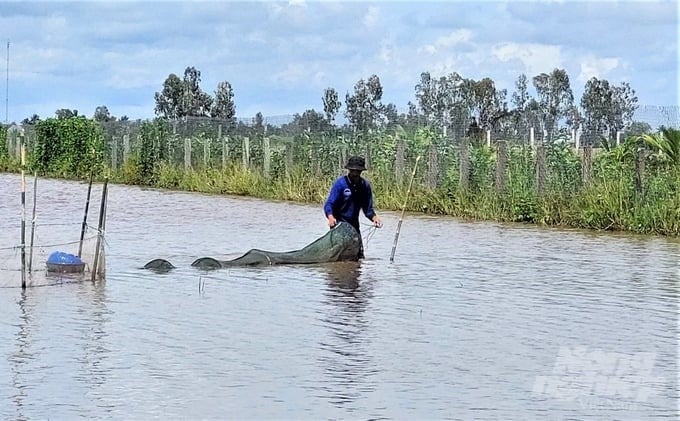
Having just finished harvesting the successful 2023 autumn-winter rice crop and letting water overflow the field, Mr. Tu set up Lu (a funnel-shaped mesh bag, 2.5–3 meters long) tools to catch natural freshwater fish. Photo: Trung Chanh.
Kenh 4B hamlet is the earliest locality to sow 2023 autumn-winter rice in Kien Giang province. Since mid-September, farmers here have started harvesting autumn-winter rice. After harvesting rice, farmers use tillers and shafts to bury rice straw and open the fields to receive flood water to clean the fields. After three consecutive rice crops, the field is immersed in the flood season for about 1.5–2 months, preparing favorable conditions for the winter–spring rice crop of 2023–2024.
After harvesting rice, Mr. Ngo Thanh Tu and his wife (Kenh 4B hamlet) have leisurely farming days, staying at home to raise more pigs and fish. The water overflowed the field, and Mr. Tu set up two Lu (a funnel-shaped mesh bag, 2.5–3 meters long) tools to catch freshwater fish in the field to eat and trash fish to serve as food for farmed fish. Mr. Tu said there has never been such a largely successful autumn-winter rice crop. Harvesting rice early also gives time to discharge floods, reducing costs for the next crop.
Mr. Tu cultivates nearly 3 hectares of the IR 50404 rice variety, which yields a harvest after just three months. This year, rice is selling like hot cakes. Traders even ask for deposits from the time the rice first blooms. Once the rice is cut and transported back, there are loading boats waiting at the canal bank to weigh it and transport it to the processing factory.
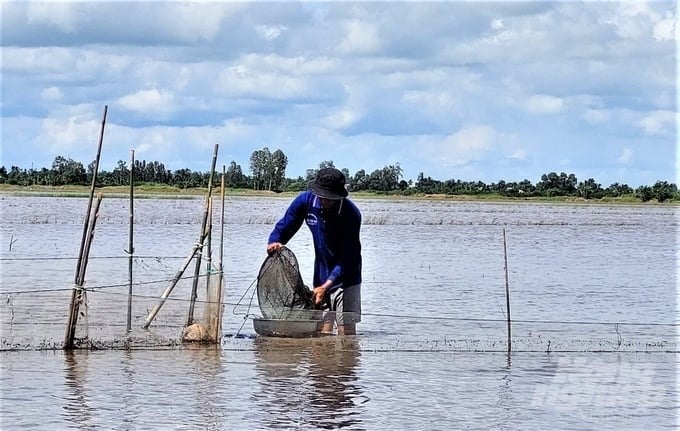
After harvesting autumn-winter rice, farmers in Kenh 4B hamlet opened their fields to receive flood water to clean the fields and prepare favorable conditions for the next rice crop. Photo: Trung Chanh.
Mr. Le Huu Toan, Deputy Director of the Kien Giang Department of Agriculture and Rural Development, said that in the 2023 autumn-winter rice crop, farmers in the province sowed nearly 85,000 hectares, an increase of 13,000 hectares compared to the plan. Of which, Tan Hiep and Giong Rieng districts alone account for nearly 54,000 hectares. Tan Hiep farmers sow mainly OM18 and OM5451 rice varieties this season; the rest are OM34 and IR50404. Farmers are currently in the harvest season; rice has achieved good yields and sold at high prices, so they are very excited.
Mr. Tu mentally calculated: "Each hectare can harvest more than 7,000 kg of fresh rice; the buying price from traders is VND 8,000/kg, so I earn VND 56 million/ha. Subtracting the investment cost of about 20 million, the profit is VND 36 million/ha. With nearly 3 hectares, I earn a profit of approximately 100 million dongs. This is a profit level that is difficult to achieve even in the winter-spring crop."
At this time, many fields in Co Do district (Can Tho city) are entering the peak of the autumn-winter rice harvest in 2023. Compared to many neighboring localities, Co. Do farmers sow seeds early, meet the time of increasing rice prices, and earn a profit of VND 2,000–2,500/kg higher compared to the previous autumn-winter crop.
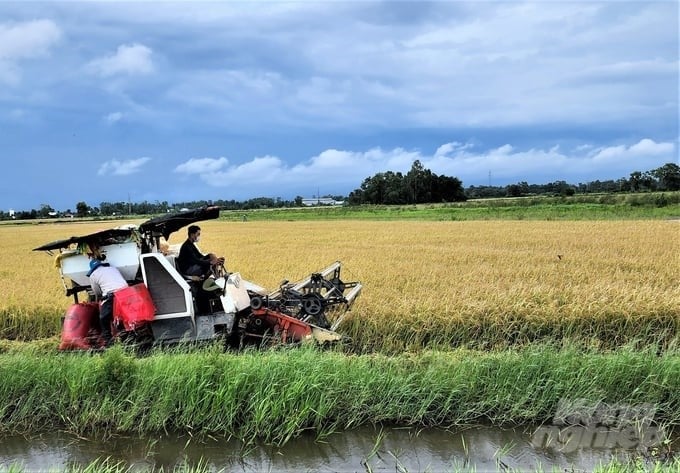
Many fields in Co Do district, Can Tho city, are rushing to completely harvest 2020 autumn-winter rice. Photo: Kim Anh.
Sitting on the bank and waiting to weigh the rice, farmer Nguyen Van Hung in Thoi Xuan commune, Co Do district, mentally calculated: "The deposit price of rice is VND 7,800/kg. After harvesting 0.8 ha of this OM5451 rice, the yield reaches 8,000 kg/ha, and I earn a guaranteed profit of over VND 30 million/ha." In an excited mood, Mr. Hung said that this profit level is much higher than that in the autumn-winter crop of previous years. Thanks to the closed dike system, farmers in the area are less affected by the weather, and rice is less prone to pests and diseases.
In his overall assessment of the 2023 autumn-winter crop, Mr. Tran Thai Nghiem, Deputy Director of the Can Tho Department of Agriculture and Rural Development, said that the entire city has harvested more than 50,000 hectares, and the remaining rice area is in the green-to-ripe stage. According to Mr. Nghiem, the 2023 autumn-winter crop is evaluated as positive because there are few pests and diseases and farmers can save a lot of investment costs. Rice productivity currently fluctuates around 5.4–5.5 tons/ha, equivalent to the average of many years.
The rice price currently tends to slow down at the level of VND 7,200–7,800/kg but still remains at a much higher level than previous crops. Since the beginning of the season, the Can Tho Department of Agriculture and Rural Development has always recommended people follow the correct linkages to avoid risks because, even though rice prices are high, at some point when the market is unstable, the price will fluctuate. Rice is characterized by its short-term cycle. If the relationship and reputation in the linkage are not closely maintained, rice will not be sustainable in the long term.
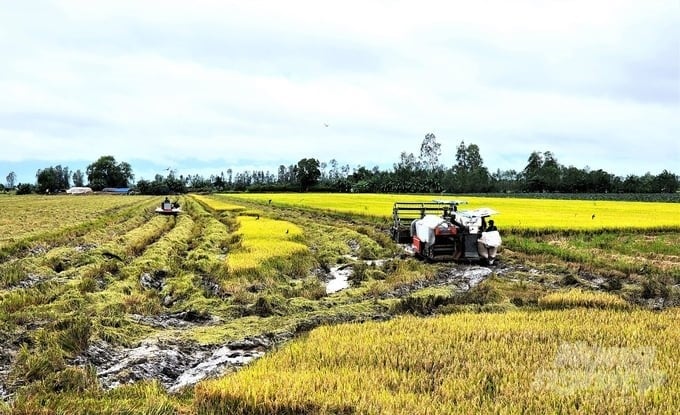
Harvesting autumn-winter rice in recent times has faced many disadvantages due to heavy rain and muddy fields. The Can Tho agriculture sector recommends that farmers proactively pump out water to avoid local floods affecting productivity. Photo: Kim Anh.
According to Mr. Nghiem, harvesting rice in recent times has not been favorable due to heavy rain and muddy fields that are relatively common. Floods in 2023 are forecast to be lower than the average for many years, but currently many fields in Can Tho city are flooded due to heavy rain combined with high tides.
Besides, in the first half of October, there was a lot of rain with locally heavy rain, so in some places, rice fields were flooded and collapsed. In the northern area of Cai San, about 12,000 hectares of autumn-winter rice in three communes of Vinh Thanh district that can be harvested fall at the end of October, when the flood water is forecast to be deeper due to the impact of high tides, so there is a risk that the autumn-winter rice harvest will be affected. Therefore, Mr. Nghiem recommended that areas that have not yet harvested autumn-winter rice proactively pump to ensure dry soil conditions, limiting the impact on productivity.
It is forecast that in the last months of 2023, rice prices are likely to remain at their current high level. Vietnam's export rice supply is no longer abundant because the summer-autumn rice crop has been harvested and the autumn-winter rice area has not increased much. Rice supplies in countries around the world are still quite limited due to the export ban from India. Indonesia has a need to buy rice in large quantities. The Philippines has the ability to reduce the import tax from 35% to 10% to increase the amount of rice purchased for reserve.
Translated by Huyen Vu Thu
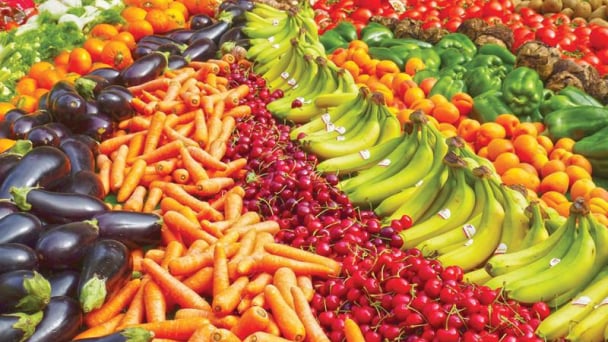
(VAN) On May 15, Ministry of Agriculture and Environment of Vietnam hosted the 'Connecting Vietnam - Germany agricultural, forestry and fishery trade' seminar in Berlin, Germany.
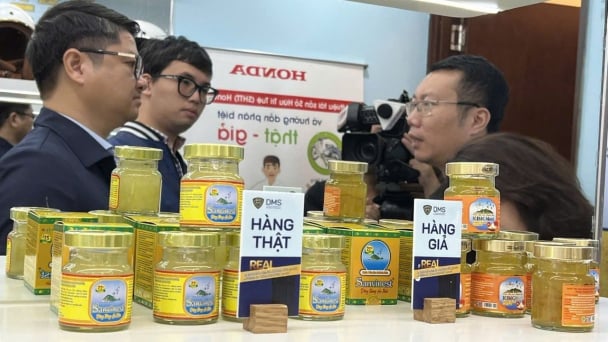
(VAN) In the face of counterfeit and imitation products, Khanh Hoa Salanganes Nest Company hopes for the prompt completion of the legal framework, strict enforcement against violations, and protection of the bird’s nest brand.
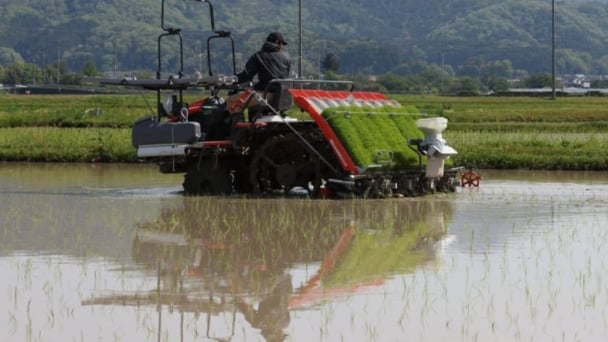
(VAN) Japan's efforts to lower the price of rice through the release of its stockpile may finally be making some progress, albeit at a snail's pace.
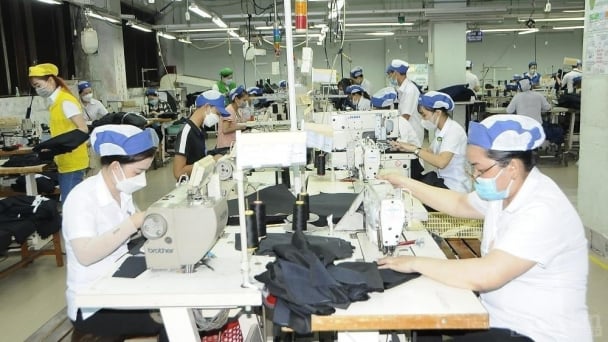
(VAN) U.S. tariffs are not only a 'shock', but also an opportunity for Vietnamese businesses to renew their mindset toward comprehensive development.
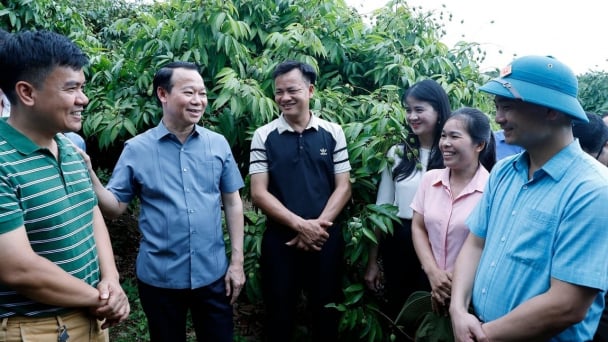
(VAN) As Bac Giang lychee enters the harvest season, Minister Do Duc Duy expects that the fruit will contribute greatly to agricultural exports due to standardized production and deep processing.
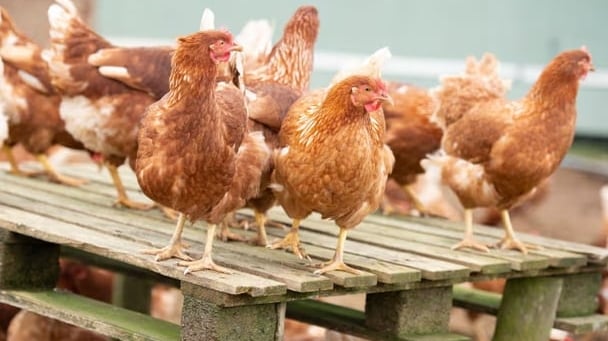
(VAN) Consumers have shown a preference for free-range eggs, but those farming systems are more vulnerable to biosecurity risks like bird flu.
/2025/05/09/5701-1-184335_301.jpg)
(VAN) Vietnam’s eel exports nearly doubled thanks to a mud-free farming model, opening up new prospects while still facing numerous barriers related to international standards.